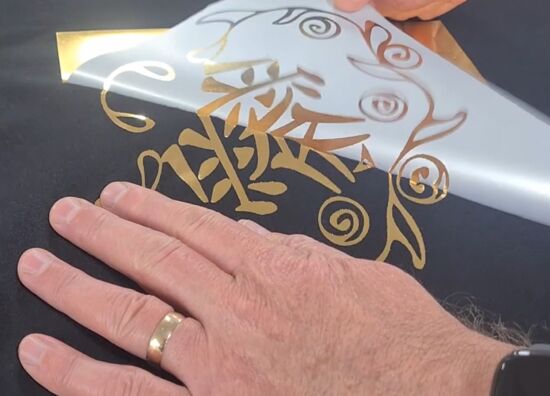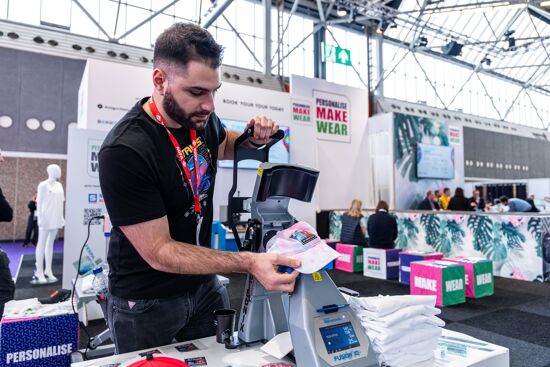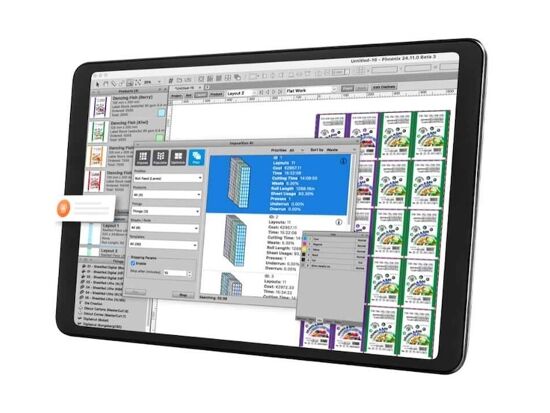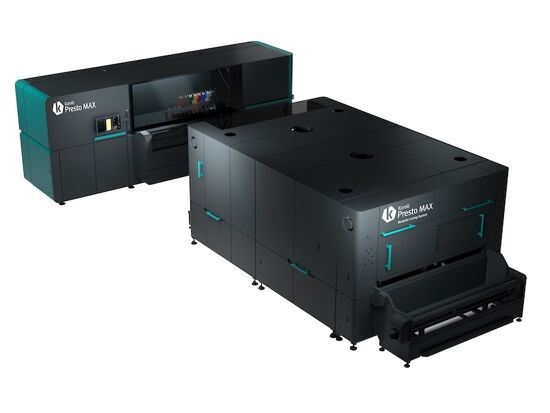Creative Collaboration with AI - How to develop Decorated Apparel design themes part 2

In this second article, Mark Coudray shares how to leverage AI programs to create interesting, commercial brand graphics for advertising, signage, apparel, and promotional products, with a key focus on decorated apparel.
Primary Challenges with AI-Assisted Design
While AI tools offer immense potential, they also present unique challenges that designers must navigate. To read the first part of this two-part article that covers generative tools for AI-assisted design including Open AI DALL-E 3, Adobe Fireflya and Midjourney Version 6.1 click here.
A primary concern with AI-generated designs is the potential a lack of true creativity. To counter this, use AI as a tool for inspiration and initial concepts rather than for final designs. Combining AI-generated elements with human creativity can lead to truly unique and compelling apparel designs.
AI tools may struggle to fully grasp brand guidelines and subtle nuances of a company's visual identity. Designers must carefully review and adjust AI-generated content to ensure it aligns with the brand's established aesthetic and messaging.
AI still has limitations in areas such as creating precise typographical elements or handling complex layered designs. Designers should be prepared to refine and adjust AI-generated content, particularly for intricate apparel designs or detailed promotional graphics.
Maintaining Coherence and Typographical Elements
To create effective multi-dimensional design themes for decorated apparel, maintaining visual coherence across various elements is a fundamental requirement. AI tools can help maintain visual consistency by analyzing and replicating design elements across different pieces. Best practice is to maintain human oversight to ensure the AI-generated designs truly capture the intended theme and brand identity.
Creating Typographic Elements
The creation of typographic elements can involve both AI-assisted and manual processes.
- AI-Generated Fonts: Utilize AI algorithms to generate entirely new typefaces or customize existing ones. Tools like "Runway ML" allow designers to create custom fonts based on hand-drawn letters.
- Variable Fonts: Implement AI-powered variable fonts that can adapt dynamically to different contexts and devices.
- Custom Typography: Use AI analysis of brand identity to create bespoke typography that aligns with the brand's message and values.
- Manual Design: Combine AI suggestions with human creativity to refine and perfect typographic designs.
Editing Typographic Elements
Editing typographic elements involves fine-tuning and optimizing the design:
- AI-Assisted Refinement: Employ AI tools to optimize kerning, tracking, and other typographic details.
- Readability Optimization: Use AI algorithms to analyze and adjust letter spacing, line height, and font size for improved readability, especially in digital formats.
- Visual Hierarchy Adjustment: Manually adjust size, weight, and color to create a clear and effective hierarchy within the design.
- Integration with Design Elements: Ensure typography complements other design elements like images and shapes. AI can assist in analyzing the overall composition and suggesting improvements.
- Responsive Design: Utilize AI-powered tools to create typography that adapts to different screen sizes and orientations.
Best Practices for Integration
- Balance AI and Human Input: While AI can generate ideas and optimize technical aspects, human designers should make final decisions to ensure the typography aligns with the project's creative vision.
- Experiment with AI-Generated Options: Use AI to quickly generate multiple typographic variations, then manually select and refine the best options.
- Maintain Brand Consistency: Ensure that AI-assisted typography aligns with established brand guidelines and identity.
- Consider Accessibility: Use AI tools to check and improve the accessibility of typographic elements, ensuring they are readable for all users.
- Iterate and Refine: Combine AI suggestions with manual adjustments to create unique and effective typographic designs.
Designers can create more efficient, innovative, and effective typographic elements in their graphics by integrating AI-assisted tools with traditional design techniques, This approach allows for rapid iteration and exploration of creative possibilities while maintaining the essential human touch in design decision-making.
Ethical Guidelines and Safeguards
Copyright Infringement and How to Avoid It
One of the most significant ethical concerns in AI-assisted design is the potential for copyright infringement. AI models are trained on vast datasets that may include copyrighted material, raising questions about the originality and legal status of AI-generated content.
To mitigate this risk:
- Use AI-generated content as inspiration rather than final products.
- Thoroughly review and modify AI outputs to ensure originality.
- Keep detailed records of the design process, AI prompts used, and modifications.
- Conduct a Google Image Search to determine if the AI image is close enough to prior published art to create confusion as to the origin.
- When in doubt, consult with legal experts specializing in intellectual property law.
- Transparency in AI Usage. Be transparent with clients about the use of AI in the design process. This builds trust and helps manage expectations regarding the final product[5].
- Human Oversight and Final Approval. Always have a human designer review and approve final designs. This ensures that the output aligns with brand guidelines, meets quality standards, and avoids potential ethical or legal issues.
A Framework for AI-Assisted Apparel Design
To effectively leverage AI in creating multi-dimensional design themes for decorated apparel, consider the following framework:
- Concept Generation Use AI tools like DALL-E3, Adobe Firefly, or Midjourney to generate initial design concepts based on the brand brief and target audience.
- Design Refinement Utilize the Adobe Suite or similar tools to refine AI-generated concepts, adjusting layouts, colors, and typography to align with brand guidelines.
- Human Creative Incorporate unique elements and creative touches that reflect human insight and experience in apparel design.
- Consistency Check Use AI analysis tools to ensure visual consistency across the design theme, making adjustments as needed.
- Legal and Ethical Review Conduct a thorough review to ensure all elements are original and do not infringe on existing copyrights.
- Client Presentation Present the AI-assisted designs to the client, highlighting the blend of AI efficiency and human creativity.
- Iteration and Finalization Based on client feedback, use AI tools for rapid iterations, always maintaining human oversight in the final design decisions.
The integration of AI tools in apparel design represents a transformative shift in our creative workflow, yet success hinges on striking the right balance between technological innovation and human expertise. By implementing a structured framework that combines AI-assisted concept generation with meticulous human oversight, designers can harness AI's capabilities while preserving the essential elements of creative originality and brand integrity.
Critical to this approach is the establishment of robust ethical guidelines and practical safeguards, particularly in addressing copyright concerns and maintaining transparency with clients. The framework outlined demonstrates how AI can be effectively leveraged throughout the design process, from the first concept generation through final implementation, while ensuring compliance with legal and ethical standards.
Looking ahead, the key to successful AI integration lies not in wholesale adoption but in strategic implementation. Designers must approach AI as a complementary tool that enhances rather than replaces human creativity.
Maintaining this perspective and following established best practices for typography, design consistency, and brand alignment, will guide in the creation of multi-dimensional apparel designs. This approach will benefit from AI's efficiency while retaining the unique creative insights that only human designers can provide. This balanced approach will act as a creative balance as we continue to navigate the evolving landscape of AI-assisted design.
To discover the latest content that covers a wide range of sectors including AI and garment decoration sign up for FESPA’s free monthly newsletter FESPA World available in English, Spanish and German.
Topics
Interested in joining our community?
Enquire today about joining your local FESPA Association or FESPA Direct
Recent news

Special Effects in DTF Will Make Your “Prints” More Memorable
The DTF market is expanding with new vendors and innovations like multi-head printers enabling diverse ink options (spot, neon). Decorative films offer streamlined special effects. Keypoint Intelligence tested metallic and glitter films, noting varied ease of use and wash durability. New technology using adhesive and foil directly promises further creative advancements in DTF.

SmartHub – Expectations, opportunities and why you should attend!
The SmartHub at Personalisation Experience 2025 in Berlin will showcase personalisation and smart production opportunities across industries like textiles. Featuring a Smart Factory Trail with brands like Inkcups and Trotec, and a conference with experts discussing AI, mass customisation, and profit strategies, it offers insights into reducing waste and boosting efficiency through digital methods. Panel sessions will explore growth, automation in textiles, and smart manufacturing.

How is AI revolutionising Large Format Print?
Nessan Clearly discusses how AI in print relies on data pattern matching, already enhancing software for large format providers. He predicts that this will result in increased AI integration in workflow planning, job queue management, colour correction, image upscaling, and predictive maintenance via sensors and vision systems, ultimately streamlining operations and offering greater flexibility.

One Ink for All? Exploring Pigment in Textile Printing
Digital textile printing faces complexity due to diverse substrates requiring specific inks. The industry seeks a universal ink, with pigment ink showing potential. While traditionally for natural fibres, advancements aim to broaden its application, simplify processes by reducing pre/post-treatment, and improve sustainability, though challenges like hand feel on garments remain.